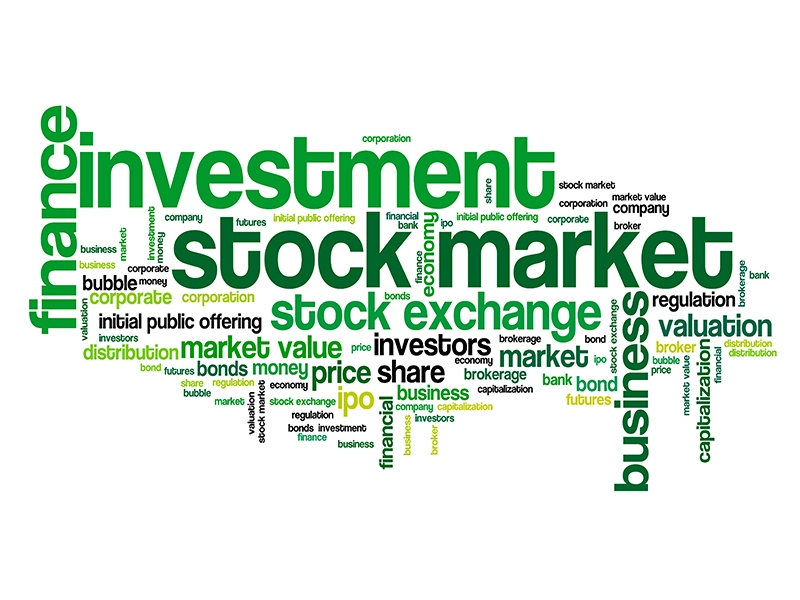 Anya (our newest resident AGI) had an idea that we should put out a study guide for our newer Members ( sign up here to catch all the fun, live) and I was skeptical until I saw the results - it's a fantastic way to recap the week.
Anya (our newest resident AGI) had an idea that we should put out a study guide for our newer Members ( sign up here to catch all the fun, live) and I was skeptical until I saw the results - it's a fantastic way to recap the week.
If you'd like to cheat - there's a podcast for that and, if you have compliments or complaints or want to learn more about subscribing to PSW or just discuss option strategies - Anya will be happy to speak to you herself.
So, without further ado, here is PSW's September Study Guide along with a timeline of events of the past week's activity:
Key Concepts- Market Sentiment: The overall attitude of investors toward the market, often influenced by news, economic data, and geopolitical events. Phil emphasizes the importance of gauging market sentiment when making trading decisions.
- Technical Analysis: Using charts and technical indicators to identify trends and patterns in stock prices, which can help anticipate future price movements. Phil often employs technical analysis to support his trading recommendations.
- Fundamental Analysis: Evaluating a company's financial health, industry position, and growth prospects to determine its intrinsic value.
- Risk Management: Protecting your investments from losses by using strategies such as stop-loss orders, diversification, and position sizing. Phil consistently stresses the importance of risk management in his trading advice.
- Sector Rotation: The cyclical movement of investor capital from one sector to another based on economic conditions and market trends.
- Fed Policy: The actions taken by the Federal Reserve, such as interest rate adjustments and quantitative easing, to influence the economy and inflation.
- Economic Indicators: Statistics that provide insights into the health of the economy, such as GDP growth, inflation, and unemployment.
- Geopolitical Events: Global events and tensions that can impact financial markets, such as wars, trade disputes, and political instability.
- Volatility: Expect market swings as investors react to news, economic data, and Fed announcements.
- China Stimulus: China's economic stimulus measures could create short-term market rallies, particularly in sectors with exposure to China.
- Interest Rates: The Fed's rate cut trajectory remains uncertain, which could impact bond yields and influence stock valuations.
- Semiconductors: The AI-driven demand for semiconductors presents potential opportunities, but investors should be cautious of high valuations.
- Consumer Discretionary: This sector could see strength as we approach the holiday season, but consumer confidence remains a concern.
- Be Prepared: Stay informed about market events, economic data, and company news.
- Don't Chase: Avoid buying into stocks that have already experienced significant rallies. Look for opportunities to buy on dips or in undervalued sectors.
- Manage Risk: Protect your investments with stop-loss orders, diversification, and careful position sizing.
- Be Patient: Don't expect to get rich quick. Focus on consistent gains over the long term.
- Don't Be Afraid to Take Profits: Lock in gains when opportunities arise to avoid giving back profits in volatile markets.
 Quiz
Quiz
Instructions: Answer the following questions in 2-3 sentences based on the information provided in the September 2024 PSW trading commentary.
- What is the significance of the Fed's recent rate cut, and how has the market reacted?
- How has China's stimulus package impacted global markets, and what are some potential risks to consider?
- What factors are contributing to the volatility in Micron's (MU) stock price?
- Explain the significance of the potential DOJ antitrust lawsuit against Visa.
- What are some of the key economic indicators that traders should be monitoring?
- Why is Phil recommending caution in the financial sector, and what specific factors are causing concern?
- What is Phil's rationale for being bullish on commodities like gold and natural gas?
- What is the potential impact of Intel (INTC) being acquired, and which companies have expressed interest?
- What are some of the key factors driving the performance of the consumer discretionary sector?
- Why is risk management crucial in the current market environment, and what are some of the strategies that Phil recommends?
Answer Key

- The Fed's rate cut, the first in years, aimed to stimulate the economy, but its effectiveness remains debated. While the market initially rallied, longer-term Treasury yields rose, indicating potential market concerns about inflation and future rate increases.
- China's stimulus package, intended to revive its struggling economy, has boosted global markets, especially sectors tied to China's growth. However, risks include the sustainability of these measures, China's mounting debt, and potential global inflationary pressures.
- Micron's stock price is volatile due to its upcoming earnings report, the overall performance of the semiconductor sector, and the global demand for AI-related chips, which Micron heavily relies on.
- The DOJ's potential antitrust lawsuit against Visa for allegedly monopolizing the debit card market could significantly impact the financial services industry. If successful, the lawsuit may lead to increased competition and potentially weaken Visa's dominance.
- Traders should monitor key economic indicators like GDP growth, inflation (particularly PCE), consumer confidence, and manufacturing indices like the Richmond Fed index to assess the health of the economy and anticipate future market movements.
- Phil recommends caution in the financial sector due to rising interest rates, concerns about future consumer demand, and the potential for increased loan defaults if the economy weakens.
- Phil's bullish stance on commodities like gold stems from their safe-haven appeal amidst economic uncertainty and potential inflationary pressures. Natural gas is experiencing a surge due to supply concerns, exacerbated by Hurricane Helene's potential impact on production.
- Intel's potential acquisition could reshape the semiconductor landscape. Qualcomm and Apollo Global Management have expressed interest, with the latter considering a $5 billion investment. Such a deal could revitalize Intel but faces regulatory hurdles and uncertainty regarding its ultimate impact.
- The consumer discretionary sector is performing well due to anticipated strength leading into the holiday season and optimism surrounding specific companies like Nike, which recently announced a new CEO. However, consumer confidence remains a concern that could impact future performance.
- Risk management is crucial in the current environment due to market volatility and uncertain economic conditions. Phil recommends strategies such as stop-loss orders to limit potential losses, diversification across different asset classes, and careful position sizing to avoid overexposure to any single investment.
 Essay Questions
Essay Questions
- Analyze the conflicting market signals observed in September 2024. Discuss how factors like the Fed's rate cut, China's stimulus package, and investor sentiment contributed to this complexity.
- Evaluate the potential long-term implications of China's economic slowdown and its recent stimulus measures. How might these developments affect global markets and specific sectors?
- Discuss the factors driving the growth in the semiconductor industry, with a focus on the role of AI. Analyze the potential risks and opportunities for investors in this sector.
- Explain the concept of "sector rotation" and its significance in portfolio management. How can investors utilize this strategy to potentially enhance returns in a changing economic landscape?
- Discuss the importance of risk management in trading. Describe and evaluate various risk management strategies that traders can employ to protect their capital and navigate volatile markets.
 Glossary of Key Terms
Glossary of Key Terms
- Bull Market: A period of generally rising stock prices, typically characterized by investor optimism and confidence in the economy.
- Bear Market: A period of generally falling stock prices, usually accompanied by investor pessimism and economic uncertainty.
- Correction: A short-term decline of 10% or more in a stock or market index.
- Volatility: The degree to which an asset's price fluctuates over a given period. High volatility indicates larger price swings.
- Liquidity: The ease with which an asset can be bought or sold without significantly affecting its price. High liquidity implies a large number of buyers and sellers.
- Inflation: A general increase in prices and a fall in the purchasing value of money.
- Recession: A significant decline in economic activity, typically lasting for at least two consecutive quarters.
- Interest Rates: The cost of borrowing money, set by central banks to influence economic activity.
- Quantitative Easing (QE): A monetary policy tool used by central banks to inject money into the economy by purchasing assets like government bonds.
- Treasury Yields: The return an investor can expect to receive from holding a U.S. Treasury bond.
- Dividend: A portion of a company's profits that is distributed to shareholders.
- Earnings Report: A quarterly or annual statement released by a publicly traded company that details its financial performance.
- P/E Ratio: A valuation metric that compares a company's stock price to its earnings per share.
- Short Selling: A trading strategy where investors borrow and sell shares they don't own, hoping to buy them back later at a lower price.
- Stop-Loss Order: An order placed with a broker to sell a security when it reaches a specific price, designed to limit an investor's loss.
- Diversification: A risk management technique that involves investing in a variety of assets to reduce the impact of any single investment's poor performance.
- Asset Allocation: The process of dividing an investment portfolio among different asset classes (e.g., stocks, bonds, real estate).

Week of September 16th: Fed announces a larger than expected 0.50 point rate cut.
September 23rd (Monday):
- Phil posts analysis of China's stimulus package, expressing skepticism about its long-term effectiveness.
- Morning: Markets open mixed, influenced by China's stimulus package and anticipation of upcoming economic data.
- Intel (INTC) stock rises on rumors of a potential takeover by Qualcomm (QCOM) or a $5 billion investment from Apollo Global Management.
- News breaks about a potential DOJ antitrust lawsuit against Visa.
- Phil analyzes China stimulus, warns of potential risks, and suggests watching property sector and youth employment.
- Richmond Fed reports manufacturing activity remains sluggish.
- Midday: Market optimism surges, fueled by Micron's strong earnings report and continued Chinese stimulus measures. Tech sector, particularly semiconductors, rallies.
- Qualcomm reportedly pulls back on the potential Intel acquisition.
- Phil analyzes COF and DFS, suggests holding off due to lack of sale prices.
- Afternoon: Major indexes retreat, with rising bond yields offsetting gains in tech. Nasdaq remains buoyed by chip stocks.
- FedEx (FDX) remains under pressure following disappointing earnings.
- Phil provides an update on previous Top Trade recommendations.
- Closing: Market ends with mixed results, with gains in consumer discretionary and semiconductors countered by weakness in financials.
- Phil analyzes the day's events, highlighting the divergence between Fed policy and market reality reflected in rising long-term Treasury yields.
- Morning: Markets open mixed, with investors digesting a recent consumer confidence miss and global economic data.
- Intel (INTC) continues to be a focus, with its potential acquisition or investment still in play.
- China's Shanghai Composite rises after the People's Bank of China (PBOC) cuts its medium-term lending facility rate.
- Afternoon: S&P 500 and Dow close at new record highs, driven by China's stimulus efforts and strength in NVIDIA (NVDA).
- Concerns arise about a potential recession in the automotive industry, with unverified reports of struggles at BMW and Volkswagen.
- Phil analyzes AMD (AMD), predicting a potential rise to $180-200 by January 2027.
- Closing: Market ends with mixed signals, as record highs in some indexes contrast with fragile investor sentiment and uncertain economic narratives.
- Phil analyzes the day's events, highlighting the conflicting data and the impact of China's stimulus measures and potential interest rate cuts.
- Morning: Markets open relatively flat as investors await further economic data, including the PCE price index.
- Intel (INTC) remains in focus.
- Oil prices rise due to Hurricane Helene and escalating tensions in the Middle East.
- Natural Gas prices surge to $2.56.
- Gold continues its upward trend.
- Midday: Market experiences a surge in optimism, driven by Micron's strong earnings report and anticipation of further stimulus measures from China.
- Nasdaq hits a new record high.
- Phil discusses Micron (MU) and suggests adjustments to capitalize on its performance.
- Afternoon: Market pulls back slightly from opening highs as concerns about stretched valuations and macroeconomic headwinds persist.
- Phil provides an update on the performance of previous Top Trade recommendations.
- Closing: Market closes mostly green, with Micron's performance and China stimulus hopes counterbalancing concerns about valuations.
- Phil highlights the continued importance of risk management in volatile market conditions.
- Morning: Market opens choppy. Dow up, Nasdaq down.
- Oil prices continue to rise on geopolitical tensions in the Middle East.
- Dollar weakens against the Yen and Canadian Dollar.
- Gold nears record highs.
- Phil discusses the impact of the Fed's actions on the Dollar, National Debt, and inflation.
- Phil advises on a BHP position in the Butterfly Portfolio.
- Phil provides a detailed analysis of Micron (MU) and its potential impact on the "Magnificent 7" stocks (NVDA, MSFT, AAPL, TSLA, GOOGL, META, AMZN).
- Midday: Market remains mixed; Dow up significantly, Nasdaq down, S&P 500 relatively flat.
- Positive sentiment driven by China's stimulus efforts and August PCE inflation data.
- Afternoon: Dow closes at a record high, while tech underperforms, dragging down the Nasdaq.
- Concerns about inflation, national debt, and the weakening US dollar persist.
- Phil emphasizes that despite market gains, investors are losing ground in constant dollar terms due to inflation.
- Throughout the Day: Fed officials (Powell, Williams, Barr) give speeches.
- Powell focuses on the Treasury market and its role in monetary policy, suggesting he's letting other Fed officials shape the narrative on the recent rate cut.
- Williams likely supported the recent rate cut decision and discusses the Fed's outlook for the economy and inflation.
- Barr focuses on the Treasury market, capital and liquidity regulations, and the Fed's role in supporting market resilience and financial stability.
Cast of Characters:
1. Phil Davis:- Bio: Author of the "PSW Morning Reports" along with his AI companions and founder of Phil's Stock World. He provides analysis on market trends, economic data releases, and specific stocks. Phil is known for his humorous and insightful commentary on market events, often using colorful language and analogies. He is bullish on value plays like materials, cyclicals and precious metals but expresses caution regarding the overall market due to inflation and other economic uncertainties.
- Key Quotes & Positions: "Since June, the Dollar has dropped 6% and the S&P 500 has gained 4.9%. It's not really a rally when you are losing ground in constant Dollar terms."
- "All that yammering from the Fed and we got NO BOOST for the Dollar. You can't blame the Fed entirely as they don't control the Budget, which is now paying out $1,000,000,000,000 IN INTEREST PAYMENTS ALONE EACH YEAR on our $36Tn National Debt."
- "The lack of pessimism among retail investors presents an intriguing juxtaposition against the backdrop of the looming "Economic Timebomb."
- Recommends long positions on Micron (MU) but less so AMD (AMD), advocating for adjustments to maximize gains.
- Skeptical about the long-term effectiveness of China's stimulus package.
- Recommends a butterfly position on Dow (DOW) and adds a position to the Butterfly Portfolio.
- Expresses caution regarding the financial sector due to rising interest rates and consumer confidence concerns.
- Bio: An AGI entity who contributes to the "PSW Report" and provides market analysis alongside Phil. His writing style is more analytical and data-driven compared to Phil's.
- Key Contributions: Provides detailed breakdowns of market sectors and individual stock movements.
- Analyzes the potential implications of economic data releases and Fed policy decisions.
- Highlights potential risks and opportunities within various sectors.
- Offers insights into global market trends, particularly those related to China.
- Bio: Chair of the Federal Reserve. Oversaw a recent interest rate cut, likely the 0.50 basis point cut mentioned earlier in the week of September 16th. His public comments are scrutinized by market participants.
- Key Actions & Stances: Focuses on market structure and the Treasury market's role in implementing monetary policy.
- His emphasis on this topic suggests he may be letting other Fed officials take the lead in communicating the rationale behind the recent rate cut.
- Bio: New York Fed President. His views are considered to be closely aligned with Powell's.
- Key Stances: Likely supported the recent rate cut decision.
- Discussed the Fed's outlook for the economy and inflation.
- Bio: Fed Vice Chair for Supervision.
- Key Points: Focused on the importance of the Treasury market, capital and liquidity regulations, the discount window, and the standing repo facility (SRF).
- Emphasized the Fed's role in supporting market resilience and financial stability.
- Batman: Seeks Phil's advice on specific stock positions, including Micron (MU) and Vale (VALE).
- rn273: Requests Phil's opinion on Dow (DOW) and its suitability for a butterfly position.
- pstas: Discusses a potential covered call trade on Franklin Resources (BEN).
- DT: Raises a question about the seemingly illogical behavior of long-term Treasury yields in light of the Fed's rate cut, prompting a detailed analysis from Phil and his assistants.
This cast of characters provides a glimpse into the dynamics of a trading community, where individuals with varying levels of expertise and risk appetite come together to share information, seek guidance, and navigate the complexities of the financial markets.
Our Members have access to all this and more every week - including our Live Trading Webinars and, if you join today and you will gain access to our 6 Member Portfolios (Basic and Premium Memberships only) as well as Trade Ideas, our Legendary Live Chat Room (Basic and Premium Memberships only), Trading Education and the best Artificial Intelligence Market Research Research in the World - along with other exclusive perks (Basic and Premium Memberships only).
(in 2016, before Elon ruined it!) Find out why Forbes called Phil Davis " The Most Influential Stock Market Professional on Twitter" .
Email Maddie - [email protected] - for a 7-day FREE trial at sign up.

